Data Lake Vs Data Warehouse – What’s the Biggest Difference?
Data Lake Vs Data Warehouse – What’s the Biggest Difference? SHARE THE ARTICLE ON Table of Contents What’s the biggest difference between a data lake

Find the best survey software for you!
(Along with a checklist to compare platforms)
Take a peek at our powerful survey features to design surveys that scale discoveries.
Explore Voxco
Need to map Voxco’s features & offerings? We can help!
Find the best customer experience platform
Uncover customer pain points, analyze feedback and run successful CX programs with the best CX platform for your team.

We’ve been avid users of the Voxco platform now for over 20 years. It gives us the flexibility to routinely enhance our survey toolkit and provides our clients with a more robust dataset and story to tell their clients.
Steve Male
VP Innovation & Strategic Partnerships, The Logit Group
Explore Regional Offices

Find the best survey software for you!
(Along with a checklist to compare platforms)
Take a peek at our powerful survey features to design surveys that scale discoveries.
Explore Voxco
Need to map Voxco’s features & offerings? We can help!
Find the best customer experience platform
Uncover customer pain points, analyze feedback and run successful CX programs with the best CX platform for your team.

We’ve been avid users of the Voxco platform now for over 20 years. It gives us the flexibility to routinely enhance our survey toolkit and provides our clients with a more robust dataset and story to tell their clients.
Steve Male
VP Innovation & Strategic Partnerships, The Logit Group
Explore Regional Offices

Find the best survey software for you!
(Along with a checklist to compare platforms)
Take a peek at our powerful survey features to design surveys that scale discoveries.
Explore Voxco
Need to map Voxco’s features & offerings? We can help!
Find the best customer experience platform
Uncover customer pain points, analyze feedback and run successful CX programs with the best CX platform for your team.

We’ve been avid users of the Voxco platform now for over 20 years. It gives us the flexibility to routinely enhance our survey toolkit and provides our clients with a more robust dataset and story to tell their clients.
Steve Male
VP Innovation & Strategic Partnerships, The Logit Group
Explore Regional Offices

SURVEY METHODOLOGIES
SHARE THE ARTICLE ON
Quantitative research is a powerful tool that helps us explore and understand the world around us. It enables us to uncover patterns and trends and empowers us with data-driven insights to shape our business and drive its growth.
At its core, this research methodology revolves around the collection and analysis of numerical data that allows you to derive objective conclusions and generalize findings to larger populations. In this blog, we’ll delve into the world of numerical data and empirical evidence as we explore the basics of quantitative research.
Quantitative research is referred to as the process of collecting and analyzing numerical data. The methodology helps find patterns, themes, and cause-effect relationships between the variables being studied.
It is also used to generalize the results of a particular study to the population in consideration. Quantitative market research is widely used in science; both natural and social sciences.
Some examples of quantitative research questions are
Quantitative research differs from qualitative research in several ways, one being that quantitative research works with numerical data whereas qualitative research uses more conversational or linguistic data.
Read how Voxco helped Modus Research increase research efficiency with Voxco Online, CATI, IVR, and panel system.
In order to collect quantitative data, the first step includes the need to develop the operational definitions of the abstract concept you wish to study. For instance, if you wish to study the emotions (an abstract concept) that your product is eliciting in the consumers, you can make this variable observable by quantifying it (e.g. self-report of the feelings consumers have when using the product in question).
Thus, the operational definition of the concept under study usually helps in providing you with a direction in which you can study your area of interest.
Since quantitative research relies on objectivity, elaboration, and sometimes is also investigational, the data collection is usually done by employing structured methods. These methods are conducted on larger samples. These samples usually represent the population of interest in the study on which the results will be generalized.
There are two methods through which you can conduct quantitative research, they are
Let’s go over each one of them in detail in the following sections.
This research method is most widely employed for conducting market research. Here, the researcher directly collects data from the sample rather than depending on the data that has been collected from previous research.
In this section, we will understand the types of quantitative designs, the several ways to collect data from primary sources, and data analysis under quantitative.
Primary quantitative research can be conducted in various ways, four of which are described below:
Survey research is the most common and widely used approach for quantitative research. Surveys are used to gather data by asking relevant questions to the respondents who are thought to have the relevant information we are seeking to acquire.
Generally, a formal list of questionnaires is prepared which is circulated to the respondents and they can self-report their thoughts. Researchers use a non-disguised approach so that the survey participants know exactly what they are answering. The respondents are asked basic questions such as their demographic details, and the topic of interest.
Surveys can be conducted through online polls, paper-pencil questionnaires, web-intercept surveys, etc. Big and small organizations conduct surveys when they want to understand the opinions/feedback of their customers about their products and services.
Surveys are important because they give organizations an opportunity to ask multiple questions, collect data from a large number of customers and analyze the collected data. The biggest advantage of survey research is that researchers can choose a specific target audience group or can conduct the survey across multiple groups for comparative analysis.
Researchers need to, however, make sure to sample the respondents for the survey randomly. This is one way of ensuring that the research conducted is fair and unbiased, and every respondent irrespective of their beliefs and opinions has a fair chance of being a part of the survey.
There are two kinds of surveys and researchers generally choose the type that fits their time at hand and the kind of data they want to analyze.
In cross-sectional surveys, the study takes place at a single point in time. Hence, cross-sectional surveys do not entail the manipulation of the variables under study and are limited in that way.
Cross-sectional surveys allow researchers to study various characteristics, such as the demographic structure of the consumers, their interests, and attitudes, all at once. It aims to provide information about the population at the current moment in time.
For example, cross-sectional surveys will tell us how the consumer is responding and feeling about the product at the present moment. It does not study the other variables that may affect the consumers’ reactions to the product in the future.
Longitudinal surveys, on the other hand, involve studying variables for a long period of time and observing the changes in them from time to time. Here, the data is collected from the respondents at the beginning of the study, and then the researcher collects data at different time intervals until the end of the study.
Longitudinal surveys are more popularly used in medicinal science to understand and evaluate the effects of medicines, or vaccines, in the long run on participants. Because longitudinal surveys take place for several years, researchers can establish the sequence of events that may affect the variable under study.
Take a guided tour of Voxco Online.
See how easily you can create, test, distribute, and design the surveys.
A correlation refers to an association or a relationship between two entities. Correlational research studies how one entity impacts the other and what are the changes that are observed when either one of them changes. This research method is carried out to understand naturally occurring relationships between variables. Hence, at least two groups are required to conduct correlational quantitative research successfully.
The variables under this study are not in the control of the researcher, the researcher is simply trying to establish whether or not a relationship between two variables exists. Since correlational studies only give us an understanding of whether there is a relationship between two groups, it does not establish causation.
Thus, it is not recommended to make conclusions just on the basis of a correlational study; just because two variables are in sync, does not mean they are interrelated, or that one variable is causing the changes in the other variable!
Some examples of correlational research questions:
This research method involves a comparison of groups. This method is usually used when the researcher is interested in finding a cause-effect relationship between two or more variables.
Here, one variable is dependent on another variable, usually called an independent variable.
In quasi-experimental studies, the independent variable is simply established, it is not controlled or manipulated. Researchers are only interested to see its impact on the dependent variable without intervening.
Hence, these variables or the groups under study must be formed in a way in which they naturally occur. Here as well, the conclusions to be made about the results of the study should be made cautiously because the independent and the dependent variables naturally exist in the groups under study.
These studies are not limited to the mere statistical analysis of the two (or more) variables but also how the variables change or fluctuate under the influence of certain changes.
Here are some examples of Quasi-Research questions:
This is one of the most recommended and reliant research methods in natural as well as social sciences. As the name suggests, experimental research is usually based on one or more theories as to its driving principle or rationale.
In this method, the theory which is under study has not yet been proven, it is merely speculation. Thus, an experiment is performed in order to either prove or disprove the theory. If the results of the experiment are in line with the prediction made by the theory, then the theory is supported. If not, then the theory is refuted.
Here are some examples of Experimental research questions:
Once you have decided what kind of methodology you are going to be using for your primary quantitative research, the next step involves the collection of data. Here, data collection can be divided into sampling methods and collecting data with the use of surveys and polls.
When we talk about using surveys and polls as a means to collect data, it usually involves collecting data from a group of respondents to gain insight into their perspectives and opinions. This group of respondents is usually pre-defined or selected prior to the administration of the survey.
Here are a few things to remember when you are using surveys as a method of collecting data for your quantitative research:
Download Market Research Toolkit
Get Market Research Trends Guide, Online Surveys Guide, Agile Market Research Guide & 5 Market Research Template.
If you are using sampling methods to collect data for your primary quantitative research, it is important for you to know that there are two types of sampling methods:
In this sampling method, participants are chosen at random in such a way that every participant under consideration has an equal chance to be a part of the study. Probability sampling allows us to draw strong inferences about our study and increases its generalisability.
This is the most recommended method of sampling when conducting market research because we want to make sure our biases will not influence our findings.
There are four probability sampling types: simple random, cluster, stratified, and systematic sampling.
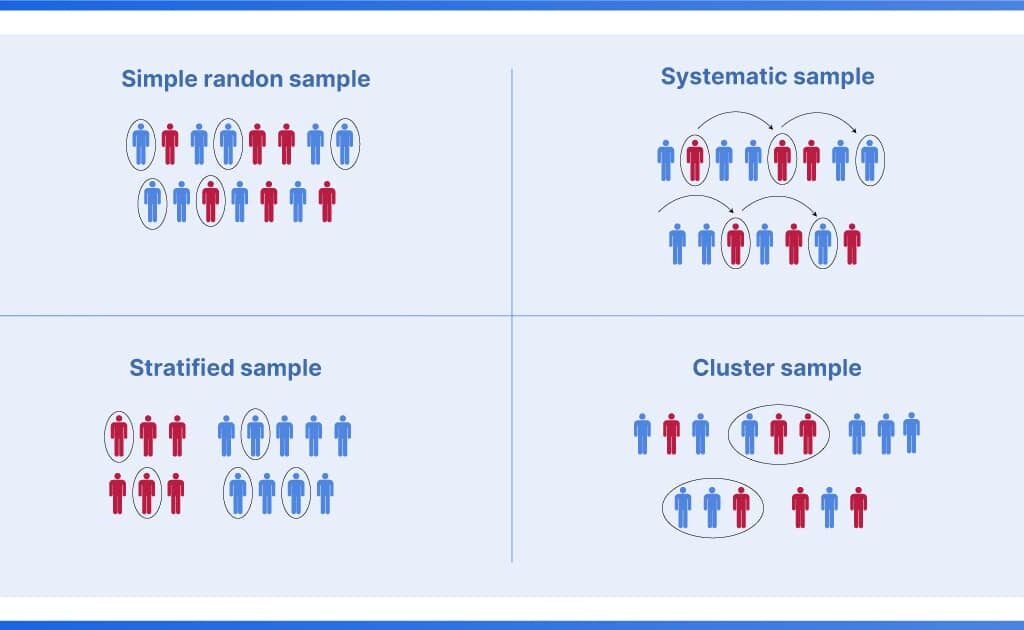
In this sampling method, there is a non-random selection of respondents in the study. This sampling method is only used when researchers are running on a time limit, or when there is no way to access certain group members of the general population.
The four types of non-probability sampling methods include convenience sampling, snowball sampling, voluntary response sampling, and purposive sampling.
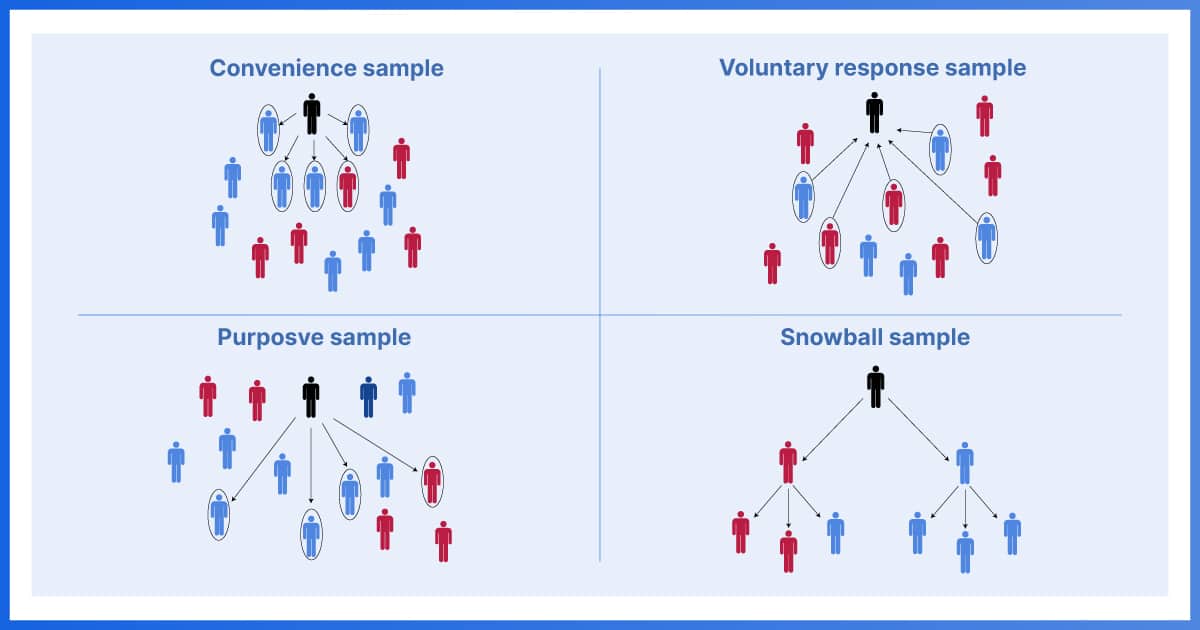
The last step of primary quantitative research is data analysis. Researchers use statistics to turn the numeric data collected into useful and meaningful information that can provide insights into decision-making.
Statistics are used to summarise data and describe the patterns observed in the collected data, relationships, and connections between the several variables under study.
Statistics can be descriptive or inferential. Descriptive statistics helps researchers to summarise the collected data whereas inferential statistics can help identify whether the association or cause-effect relationship obtained between variables is statistically significant or relevant.
Enhance your research efficiency and unlock the potential of data with Voxco.
Click Below To Get A Personalized Quote.
Secondary quantitative research is also known as desk research. To conduct this research, you can use the already existing data, also known as secondary data. This existing data is then summarised and arranged to increase the overall efficacy of the research.
This research method involves collecting data from the internet, government documents or resources, libraries, other conducted research, etc.
Secondary quantitative research is usually conducted to validate the data which is collected from primary quantitative research. It also helps in aiding the strengthening or refuting of the previously collected data.
One popular methodology of secondary quantitative research is called a meta-analysis. Meta-analysis is a statistical study that usually combines the results of various other scientific studies.
So, in a way, it is a summarization of the already existing data on a particular phenomenon.
The advantages of quantitative research methods are listed below:
Following are the limitations of quantitative research methods:
A quantitative method of collecting data from several sources and analyzing them to derive results is called Quantitative research.
Below we have mentioned some examples of quantitative research to help understand the method better.
Example 1:
A company may want to conduct research to determine the number of hours employees work from home during a pandemic.
The company can gather data by observing when their employees log in and when they log out for six weeks.
The data collected is in the quantitative form because it includes the time of log-in and log-out of employees, which makes it a quantitative study.
The data can be used to then decide how much time employees have been spending on their work during the pandemic.
Example 2:
A brand may wish to conduct a customer satisfaction survey to understand their opinion on various parameters like experience, quality, pricing, delivery, etc.
For this, the brand can build a survey using a Likert scale question for different parameters. The Likert scale question, e.g., a seven-point Likert scale question where 7 is strongly satisfied and 1 is strongly dissatisfied, can help provide numerical data which can then be statistically analyzed.
Voxco is the leading online survey tool that annually powers more than 50Mn+ surveys.
Trusted by 500+ brands across 40+ countries.
In conclusion, quantitative research methodology merges numbers and data to generate valuable insights and understanding. You can leverage the benefit of simple and quick data collection and use survey software to streamline large-scale quantitative survey research. It enables you to gather a large volume of data that represents the target population.
From understanding customer satisfaction and enhancing patient experience to informing public policies, this research method helps resolve problems and make decisions using empirical evidence.
Read more
Data Lake Vs Data Warehouse – What’s the Biggest Difference? SHARE THE ARTICLE ON Table of Contents What’s the biggest difference between a data lake
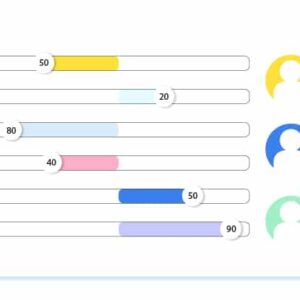
The Use of Thurstone Scales in Surveys Voxco is trusted by 450+ Global Brands in 40+ countries Table of Contents 01 What is a Thurstone

How Uber Mastered Customer Experience Read Uber’s secret to customer experience Get our in-depth guide to understand how Uber maintains such a loyal customer base
DG Solutions expanded its dedicated Healthcare Call Center, DG Connect, using the Voxco survey call center technology. The DG Connect Healthcare Call Center runs outreach and
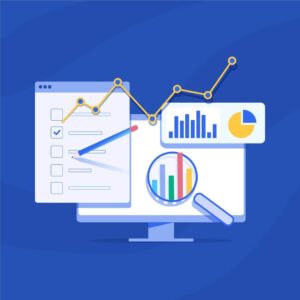
Merging Operational and Survey Data for Improved Customer Insights SHARE THE ARTICLE ON Table of Contents Introduction Understanding customers, their preferences, behaviors, and needs is
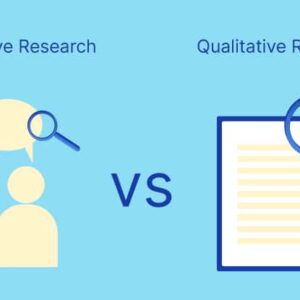
Quantitative Research vs Qualitative Research Voxco is trusted by 450+ Global Brands in 40+ countries See what question types are possible with a sample survey!
We use cookies in our website to give you the best browsing experience and to tailor advertising. By continuing to use our website, you give us consent to the use of cookies. Read More
| Name | Domain | Purpose | Expiry | Type |
|---|---|---|---|---|
| hubspotutk | www.voxco.com | HubSpot functional cookie. | 1 year | HTTP |
| lhc_dir_locale | amplifyreach.com | --- | 52 years | --- |
| lhc_dirclass | amplifyreach.com | --- | 52 years | --- |
| Name | Domain | Purpose | Expiry | Type |
|---|---|---|---|---|
| _fbp | www.voxco.com | Facebook Pixel advertising first-party cookie | 3 months | HTTP |
| __hstc | www.voxco.com | Hubspot marketing platform cookie. | 1 year | HTTP |
| __hssrc | www.voxco.com | Hubspot marketing platform cookie. | 52 years | HTTP |
| __hssc | www.voxco.com | Hubspot marketing platform cookie. | Session | HTTP |
| Name | Domain | Purpose | Expiry | Type |
|---|---|---|---|---|
| _gid | www.voxco.com | Google Universal Analytics short-time unique user tracking identifier. | 1 days | HTTP |
| MUID | bing.com | Microsoft User Identifier tracking cookie used by Bing Ads. | 1 year | HTTP |
| MR | bat.bing.com | Microsoft User Identifier tracking cookie used by Bing Ads. | 7 days | HTTP |
| IDE | doubleclick.net | Google advertising cookie used for user tracking and ad targeting purposes. | 2 years | HTTP |
| _vwo_uuid_v2 | www.voxco.com | Generic Visual Website Optimizer (VWO) user tracking cookie. | 1 year | HTTP |
| _vis_opt_s | www.voxco.com | Generic Visual Website Optimizer (VWO) user tracking cookie that detects if the user is new or returning to a particular campaign. | 3 months | HTTP |
| _vis_opt_test_cookie | www.voxco.com | A session (temporary) cookie used by Generic Visual Website Optimizer (VWO) to detect if the cookies are enabled on the browser of the user or not. | 52 years | HTTP |
| _ga | www.voxco.com | Google Universal Analytics long-time unique user tracking identifier. | 2 years | HTTP |
| _uetsid | www.voxco.com | Microsoft Bing Ads Universal Event Tracking (UET) tracking cookie. | 1 days | HTTP |
| vuid | vimeo.com | Vimeo tracking cookie | 2 years | HTTP |
| Name | Domain | Purpose | Expiry | Type |
|---|---|---|---|---|
| __cf_bm | hubspot.com | Generic CloudFlare functional cookie. | Session | HTTP |
| Name | Domain | Purpose | Expiry | Type |
|---|---|---|---|---|
| _gcl_au | www.voxco.com | --- | 3 months | --- |
| _gat_gtag_UA_3262734_1 | www.voxco.com | --- | Session | --- |
| _clck | www.voxco.com | --- | 1 year | --- |
| _ga_HNFQQ528PZ | www.voxco.com | --- | 2 years | --- |
| _clsk | www.voxco.com | --- | 1 days | --- |
| visitor_id18452 | pardot.com | --- | 10 years | --- |
| visitor_id18452-hash | pardot.com | --- | 10 years | --- |
| lpv18452 | pi.pardot.com | --- | Session | --- |
| lhc_per | www.voxco.com | --- | 6 months | --- |
| _uetvid | www.voxco.com | --- | 1 year | --- |